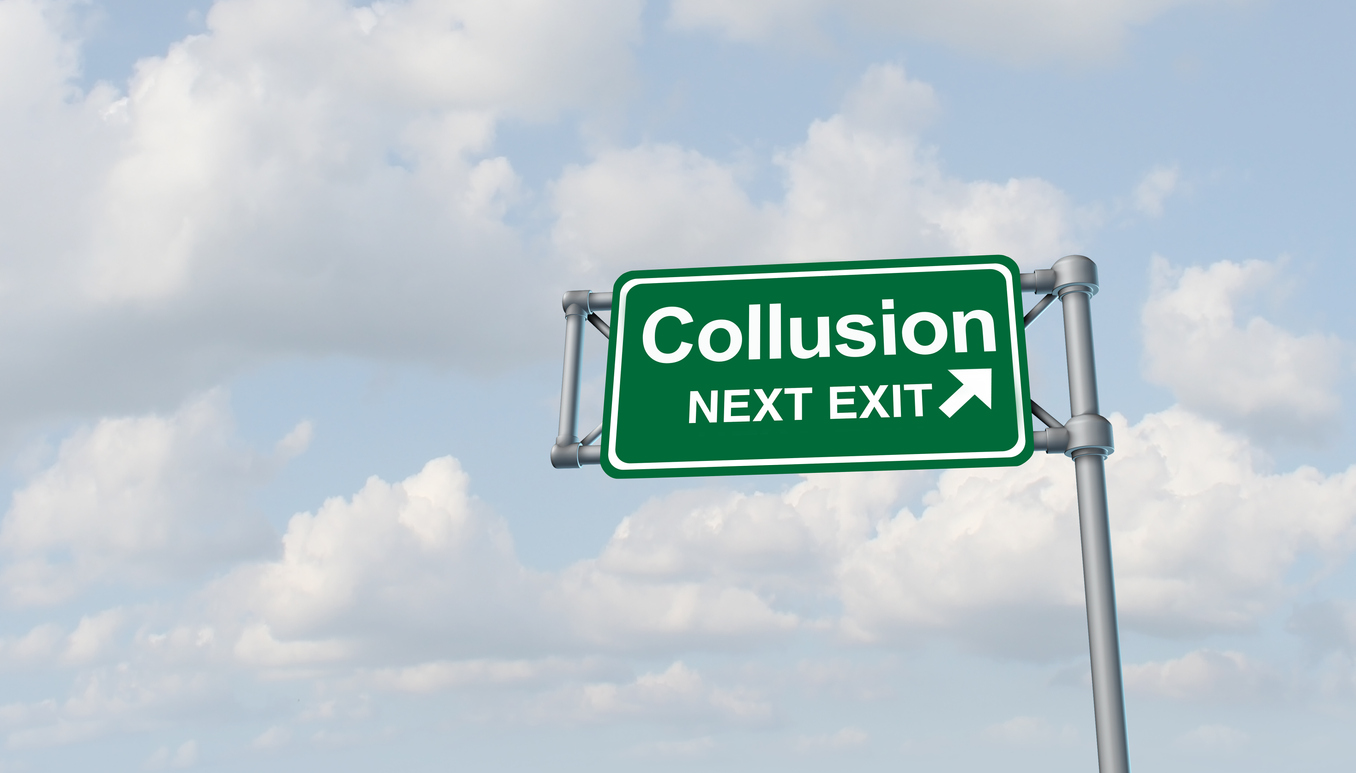In my last blog, The McCarran-Ferguson – Expanded, I spoke at length about how the McCarran-Ferguson Insurance Regulation Act declared that continued regulation and taxation of the insurance industry by the states was in public interest. Pursuant to this policy, the Act exempts the business of insurance from the federal anti-trust statutes to the extent that state law regulates the insurance industry.1 Section 3(b) of the McCarran-Ferguson Act, however, provides an exception to this exemption by excluding from the statute’s protective shield acts and agreement amounting to boycott, intimidation, or coercion.2 This section was enacted to prevent a recurrence of anticompetitive practices characterized by the United States v. South-Easter Underwriters Association (South Eastern Underwriters) court as “boycott, coercion, and intimidation.”
Since these terms are not described in the statute, courts have looked to the practices condemned in South Eastern Underwriters and to the legislative history of the Act to define the proper scope of the boycott exception. Section 1 of the Sherman Act states:
Every contract, combination in the form of trust or otherwise, or conspiracy, in restraint of trade or commerce among the several States, or with foreign nations, is declared to be illegal.
Because virtually every agreement between parties has the potential to be considered a restraint of trade, antitrust jurisprudence limits the range of restraints within the reach of antitrust law to those agreements that unreasonably restrain trade.3
The term boycott is an exclusionary practice by traders at one level who attempt to impede entry at that level by depriving a competitor of either resources or customers.4 Boycott is a concerted refusal to deal or a group action designed to pressure another party into doing something by withholding or enlisting others to withhold patronage or services from the target. It can be a method of shutting a competitor out of a market or preventing entry of a new firm into a market. A boycott is condemned as a per se violation of the Sherman Act because the boycott is conclusively presumed to be an unreasonable restraint of trade because of the blatant and necessary effect on competition. Depending on the nature of the boycott, the courts may apple the rule of reason, a quick analysis, or hold that the boycott is illegal per se. There is a presumption in favor of a rule of reason standard.5
Chip Merlin has written about anti-trust boycotts on this blog. In, Are Property Insurers Subject to Antitrust Lawsuits Through Pricing Guidelines and Boycotting Contractors That Properly and Legally Repair Property?, he noted:
Section 1 of the Sherman Act, 15 U.S.C. § 1, prohibits ‘[e]very contract, combination in the form of trust or otherwise, or conspiracy, in restraint of trade or commerce among the several States.’ Insurance companies have various incentives to price fix for lower repair prices and most of us in the property claims business have witnessed various patterns of claims practices that accomplish this. The question is whether those practices violate antitrust laws.
…
I noticed that a number of the law firms involved defending the insurance companies are also prominent players and participants in the insurance trade associations where it was alleged that the defendant insurers were sharing claims information in aid of a conspiracy theory. The PLRB and various insurance trade industry organizations pay lip service to these concerns of criminal violation with simple warnings about not violating Sherman Anti-Trust laws.
1. The “Per Se” Rule
Restraints analyzed under the per se rule are those that are almost always so inherently anticompetitive and damaging to the market that they warrant condemnation without further inquiry to their effects on the market or the existence of an objective competitive justification.6
Business practices that are considered per se illegal under antitrust laws include: (a) horizontal agreements to fix prices; (b) horizontal market allocation agreements; (c) bid rigging among competitors; (d) certain horizontal group boycotts by competitors; and (e) sometimes tying arrangements.
There does however exist an exception to the per se application. When parties establish a joint venture or other pro-competitive structure and such restraints are necessary to the existence of that venture or structure, there are instances in which a court will deem the suspect restraints necessary and apply a lesser standard, like the rule of reason.
2. The “Rule of Reason” approach
A contract, combination or conspiracy that unreasonably restrains trade and does not fit into the per se category is usually analyzed under the “Rule of Reason” test. This test requires; (i) a definition of the relevant product and geographic market; (ii) market power of the defendant(s) in the relevant market; and (iii) the existence of anticompetitive effects. After this analysis is met, the court will then shift the burden to the defendant(s) to demonstrate an objective procompetitive justification.
Most antitrust claims are analyzed under this test. When applying this test, courts must evaluate whether they impose an unreasonable restraint on competition. In doing so, judges consider a variety of factors, including: (i) intent and purpose in adopting the restriction; (ii) the competitive position of the defendant; (iii) the structure and competitive conditions of the relevant market; (iv) barriers to entry; and (v) the existence of an objective justification for the restriction.7
None of these factors are conclusive and courts must balance them to determine whether the restraint of trade at issue is competitively unreasonable.8
3. The “Quick Look” review
Under this condensed version of the rule of reason analysis, the court does not need to conduct the above analysis. Instead, the plaintiff need only demonstrate a form of market injury. A court may apply this analysis when the defendant’s conduct is not that type that rises to per se illegal but appears likely to have anticompetitive effects that make it unnecessary for a court to go through the full analysis.9
To learn more about antitrust laws and as a warning to all adjusters in this field, read the final judgment on a case brought successfully by the United States against the General Adjustment Bureau (GAB) for alleged violation of Sections 1 and 3 of the Sherman Act.10 The case involved over 170 different insurance companies who were charged with conspiring with violation of antitrust laws and causing defendant’s adjusting facilities, to boycott other independent adjusters, and coerce and intimidate agents to channel claims to the defendant. The complaint of the case alleged that the conspiracy as charged had the effect of eliminating competition among insurance companies in the adjustment and settlement of claims and, denied insureds the benefits of such competition.
These matters are not often spoken about in modern day practice where insurance defense lawyers, company executives, and claims adjusters are sharing information only for insurance industry officials to attend. They are also not raised on any of the insurance company consultant websites such as McKinsey and Company, whose partners certainly would not want to have exposed how they share claims practices and claims data with competing companies that are their clients.
________________________________________
1 Ohio AFL-CIO v. Insurance Rating Bd., 451 F.2d 1178 (6th Cir. 1971), cert. denied, 409 U.S. 917 (1972).
2 15 U.S.C. § 1013(b) (1970). The boycott exception provides: “Nothing contained in this chapter shall render the said Sherman Act inapplicable to any agreement to boycott, coerce of intimidate, or act of boycott, coercion, or intimidation.”
3 Food Lion, LLC v. Dean Foods Co. (In re Se. Milk Antitrust Litig.), 739 F.3d 262 (6th Cir. 2014) .
4 L. Sullivan, Antitrust § 83 (1977).
5 Craftsmen Limousine, Inc. v. Ford Motor Co., 363 F.3d 761, 772 (8th Cir. 2004) (“The United States Supreme Court has set forth three methods for analyzing the reasonableness of a restraint on trade: rule of reason analysis, per se analysis, and quick look analysis. The rule of reason in the prevailing standard.”)
6 U.S. v Socony-Vacuum Oil Co., 310 U.S 150 (1940); United States v. Sealy, Inc., 388 U.S. 350 (1967); United States v. Topco Associates, Inc., 405 U.S. 596 (1972); Craftsmen Limousine, Inc. v. Ford Motor Co., 363 F.3d 761 (8th Cir. 2004); U.S. Dep’t of Justice and Federal Trade Comm’n, Antitrust Guidelines for Collaborations Among Competitors, from April 2000 (Section 3.2).
7 Business Electronics Corp. v. Sharp Electronics Corp., 485 U.S. 717 (1988); National Collegiate Athletic Ass’n v. Board of Regents of University of Oklahoma, 468 U.S. 85 (1984); State Oil v. Kahn, 522 U.S. 3, 10 (1997); and California Dental Ass’n v. FTC, 526 U.S. 756 (1999).
8 Leegin Creative Leather Products Inc. v. PSKS Inc., 127 S. Ct. 28 (2006).
9 National Collegiate Athletic Ass’n v. Board of Regents of University of Oklahoma, 468 U.S. 85 (1984).
10 United States v. General Adjustment Bureau, Inc., 357 F. Supp. 426 (S.D.N.Y. 1973).




